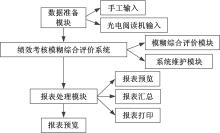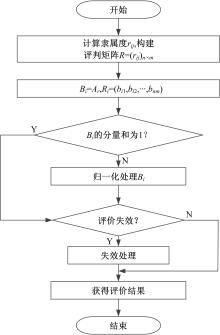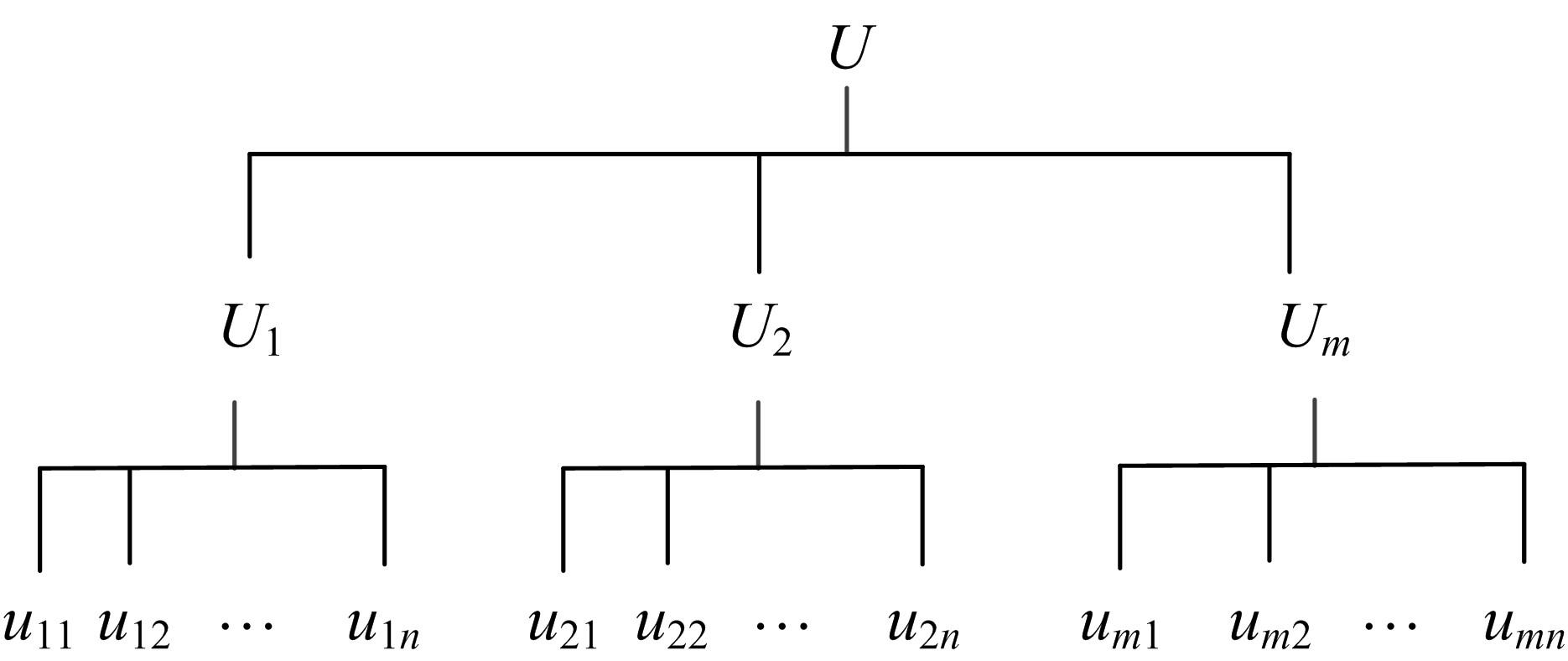Journal of Jilin University(Engineering and Technology Edition) ›› 2021, Vol. 51 ›› Issue (5): 1851-1856.doi: 10.13229/j.cnki.jdxbgxb20201004
Design of fuzzy comprehensive evaluation system for performance appraisal based on K⁃means clustering algorithm
Meng-su ZHANG1( ),Chun-tian LIU1,Xi-jin LI1,Yong-ping HUANG2(
),Chun-tian LIU1,Xi-jin LI1,Yong-ping HUANG2( )
)
- 1.Human Resources Division,Jilin University,Changchun 130012,China
2.College of Computer Science and Technology,Jilin University,Changchun 130012,China
CLC Number:
- TP18
| 1 | 宋晨霞, 张海光, 胡庆夕. 高校示范中心全方位绩效考核的探索与实践[J]. 实验技术与管理, 2019, 36(7): 197-200. |
| Song Chen-xia, Zhang Hai-guang, Hu Qing-xi. Exploration and practice of all-sided performance evaluation on university demonstration centers[J]. Experimental Technology and Management, 2019, 36(7):197-200. | |
| 2 | 陈丽娟, 陈滨, 刘海霞. 厦门大学图书馆的绩效考核评价体系[J]. 图书馆论坛, 2020, 40(1): 146-152. |
| Chen Li-juan, Chen Bin, Liu Hai-xia. The performance appraisal system of Xiamen University Library[J]. Library Tribune, 2020, 40(1): 146-152. | |
| 3 | Deng X, Gu Y, Li F, et al. Evaluation of teaching quality of computing method course based on improved BP neural network[J]. Journal of Physics Conference Series, 2021, 1774: 012026. |
| 4 | 李锋, 林华. 基于功效系数法与模糊综合评价法的企业营销绩效考核研究[J]. 学术论坛, 2010, 33(2): 113-116. |
| Li Feng, Lin Hua. Research on enterprise marketing performance evaluation based on efficiency coefficient method and fuzzy comprehensive evaluation method [J]. Academic Forum, 2010, 33(2): 113-116. | |
| 5 | 李桂英. 基于模糊综合评判授课质量评价系统的设计与实现[J]. 华南师范大学学报: 自然科学版, 2003(4): 48-53. |
| Li Gui-ying. Research and design of teaching quality evaluation system based on fuzzy comprehensive evaluation[J]. Joutnal of South China Normal University (Natural Science Edition), 2003(4): 48-53. | |
| 6 | Zhao Y. Research on the application of university teaching management evaluation system based on Apriori algorithm[J]. Journal of Physics, 2021, 1883: 012033. |
| 7 | 李晓霞. 基于模糊综合评价模型的教学评价系统的设计与实现[D]. 成都: 电子科技大学计算机科学与工程学院, 2015. |
| Li Xiao-xia. Design and implementation of teaching evaluation system on fuzzy evaluation[D]. Chengdu: School of Computer Science and Engineering, University of Electronic Science and Technology of China, 2015. | |
| 8 | 杨洁, 黄梦亿, 陈佳. 多粒度邻域粗糙模糊集及其不确定性度量[J]. 重庆邮电大学学报:自然科学版, 2020, 32(5): 898-908. |
| Yang Jie, Huang Meng-yi, Chen Jia. Neighborhood-based multi-granulation rough fuzzy sets and their uncertainty measure[J]. Journal of Chongqing University of Posts and Telecommunications (Natural Science Edition), 2020, 32(5): 898-908. | |
| 9 | 张波, 周从华, 张付全, 等. 一种面向SNP选择的模糊聚类算法[J]. 计算机工程, 2019, 45(8): 66-74. |
| Zhang Bo, Zhou Cong-hua, Zhang Fu-quan,et al. A Fuzzy Clustering Algorithm for SNP Selection[J]. Computer Engineering, 2019, 45(8): 66-74. | |
| 10 | 祖志文, 李秦. 基于粒子群优化的马氏距离模糊聚类算法[J]. 重庆邮电大学学报:自然科学版,2019, 31(2): 279-384. |
| Zu Zhi-wen and Li Qin. Mahalanobis distance fuzzy clustering algorithm based on particle-swarmoptimization[J]. Journal of Chongqing University of Posts and Telecommunications(Natural Science Edition),2019, 31(2): 279-384. | |
| 11 | 钱雪忠,姚琳燕. 面向稀疏高维大数据的扩展增量模糊聚类算法[J]. 计算机工程, 2019, 45(6): 75-81. |
| Qian Xue-zhong,Yao Lin-ya. Extended incremental fuzzy clustering algorithm for sparse high-dimensional big data[J]. Computer Engineering, 2019, 45(6): 75-81. | |
| 12 | 丁志成, 葛洪伟, 周竞. 基于KL散度的密度峰值聚类算法[J]. 重庆邮电大学学报:自然科学版,2019, 31(3): 367-374. |
| Ding Zhi-cheng, Ge Hong-wei,Zhou Jing. Density peaks clustering based on Kullback Leibler divergence[J]. Journal of Chongqing University of Posts and Telecommunications(Natural Science Edition), 2019, 31(3): 367-374. | |
| 13 | 徐勇, 张慧, 陈亮. 一种基于情感分析的UGC模糊综合评价方法——以淘宝商品文本评论UGC为例[J]. 情报理论与实践, 2016, 39(6): 64-69. |
| Xu Yong, Zhang Hui, Chen Liang. A UGC fuzzy comprehensive evaluation method based on sentiment analysis—taking UGC of Taobao Product text reviews[J]. Information Studies: Theory & Application, 2016, 39(6): 64-69. | |
| 14 | 王茜竹, 徐瑞, 江德潮, 雒江涛. 基于多源数据的出行安全时空评价模型研究[J]. 重庆邮电大学学报:自然科学版, 2019, 31(5): 618-627. |
| Jiang De-chao, Luo Jiang-tao. Research on the spatial-temporal evaluation model of travel safety based on multi-source data[J]. Journal of Chongqing University of Posts and Telecommunications (Natural Science Edition), 2019, 31(5): 618-627. | |
| 15 | MacQueen J. Some methods for classification and analysis of multivariate observations[J]. Proceedings of the Fifth Berkeley Symposium on Mathematical Statistics and Probability, 1967, 14(1): 281-297. |
| [1] | Jie CAO,Xue QU,Xiao-xu LI. Few⁃shot image classification method based on sliding feature vectors [J]. Journal of Jilin University(Engineering and Technology Edition), 2021, 51(5): 1785-1791. |
| [2] | Yin-di YAO,Jun-jin HE,Yang-li LI,Dang-yuan XIE,Ying LI. ET0 simulation of self⁃constructed improved whale optimized BP neural network [J]. Journal of Jilin University(Engineering and Technology Edition), 2021, 51(5): 1798-1807. |
| [3] | Hong-wei ZHAO,Zi-jian ZHANG,Jiao LI,Yuan ZHANG,Huang-shui HU,Xue-bai ZANG. Bi⁃direction segmented anti⁃collision algorithm based on query tree [J]. Journal of Jilin University(Engineering and Technology Edition), 2021, 51(5): 1830-1837. |
| [4] | Chun-bo WANG,Xiao-qiang DI. Cloud storage integrity verification audit scheme based on label classification [J]. Journal of Jilin University(Engineering and Technology Edition), 2021, 51(4): 1364-1369. |
| [5] | Dan-tong OUYANG,Yang LIU,Jie LIU. Fault diagnosis method based on test set under fault response guidance [J]. Journal of Jilin University(Engineering and Technology Edition), 2021, 51(3): 1017-1025. |
| [6] | Rong QIAN,Ru ZHANG,Ke-jun ZHANG,Xin JIN,Shi-liang GE,Sheng JIANG. Capsule graph neural network based on global and local features fusion [J]. Journal of Jilin University(Engineering and Technology Edition), 2021, 51(3): 1048-1054. |
| [7] | Xiao-long ZHU,Zhong XIE. Geospatial data extraction algorithm based on machine learning [J]. Journal of Jilin University(Engineering and Technology Edition), 2021, 51(3): 1011-1016. |
| [8] | Bao-feng SUN,Xin-xin REN,Zai-si ZHENG,Guo-yi Li. Multi⁃objective flow shop optimal scheduling considering worker's load [J]. Journal of Jilin University(Engineering and Technology Edition), 2021, 51(3): 900-909. |
| [9] | Shu-min WANG,Wei CHEN. Algorithm for identifying abnormal behavior in underground mines based on continuous density hidden Markov model [J]. Journal of Jilin University(Engineering and Technology Edition), 2021, 51(3): 1067-1072. |
| [10] | Yuan-ning LIU,Di WU,Xiao-dong ZHU,Qi-xian ZHANG,Shuang-shuang LI,Shu-jun GUO,Chao WANG. User interface components detection algorithm based on improved YOLOv3 [J]. Journal of Jilin University(Engineering and Technology Edition), 2021, 51(3): 1026-1033. |
| [11] | Guang-qiu CHEN,Yu-cun CHEN,Jia-yue LI,Guang-wen LIU. Infrared and visible image fusion based on discrete nonseparable shearlet transform and convolutional sparse representation [J]. Journal of Jilin University(Engineering and Technology Edition), 2021, 51(3): 996-1010. |
| [12] | Shu-tao SHEN,Zha-xi NIMA. Double chaos identifiable tampering image encryption method based on blockchain technology [J]. Journal of Jilin University(Engineering and Technology Edition), 2021, 51(3): 1055-1059. |
| [13] | Bing-hai ZHOU,Zhao-xu HE. Static semi⁃kitting strategy⁃based multi⁃objective just⁃in⁃time material distribution scheduling [J]. Journal of Jilin University(Engineering and Technology Edition), 2021, 51(3): 910-916. |
| [14] | Tian-qi GU,Chen-jie HU,Yi TU,Shu-wen LIN. Robust reconstruction method based on moving least squares algorithm [J]. Journal of Jilin University(Engineering and Technology Edition), 2021, 51(2): 685-691. |
| [15] | Qian-yi XU,Gui-he QIN,Ming-hui SUN,Cheng-xun MENG. Classification of drivers' head status based on improved ResNeSt [J]. Journal of Jilin University(Engineering and Technology Edition), 2021, 51(2): 704-711. |
|
||





